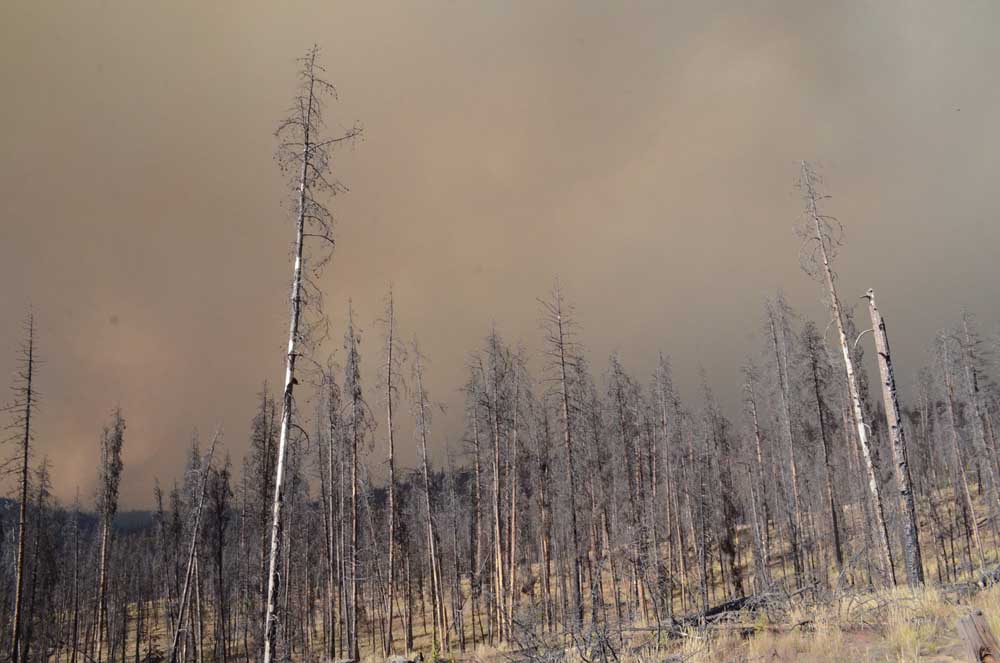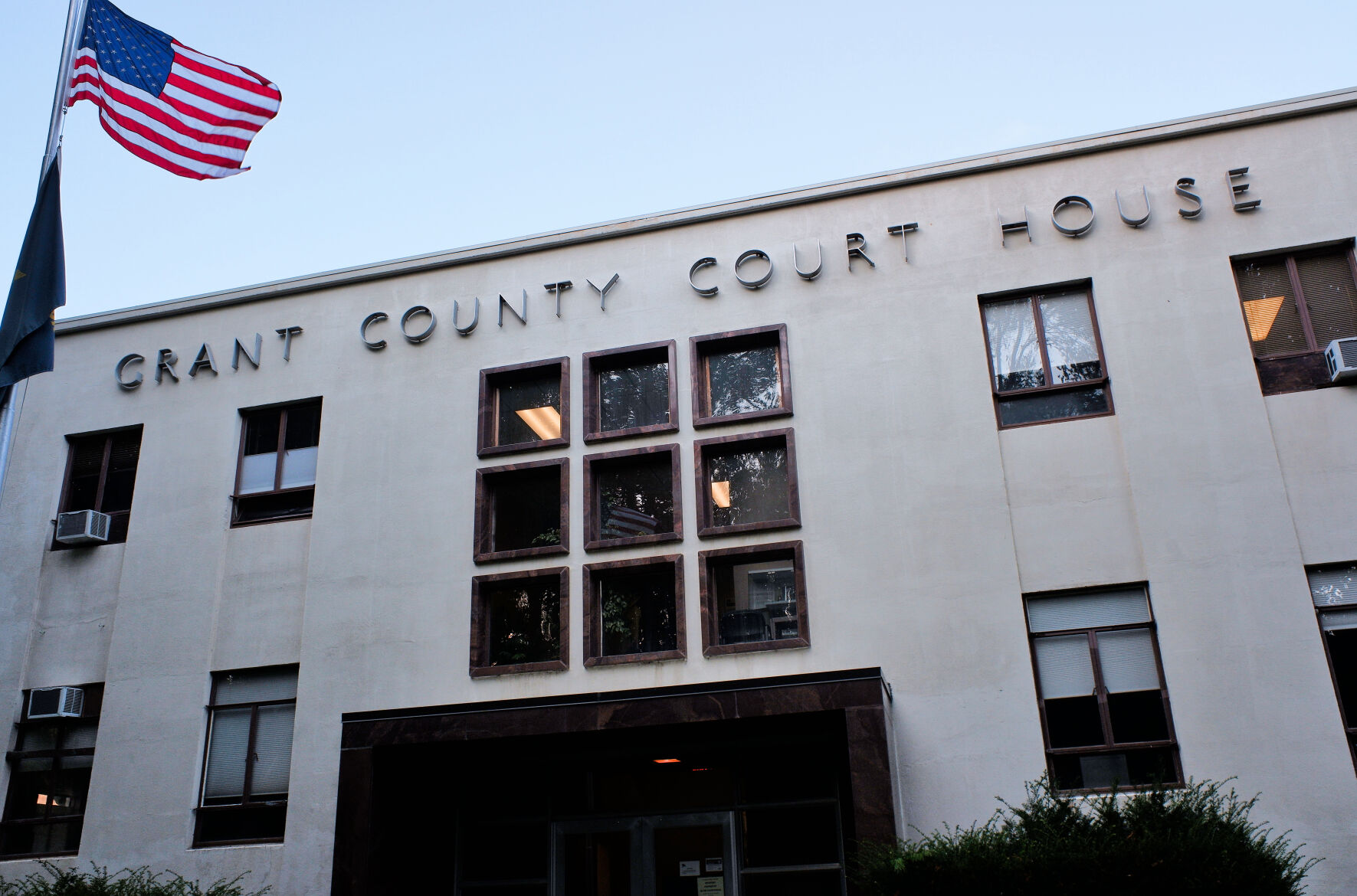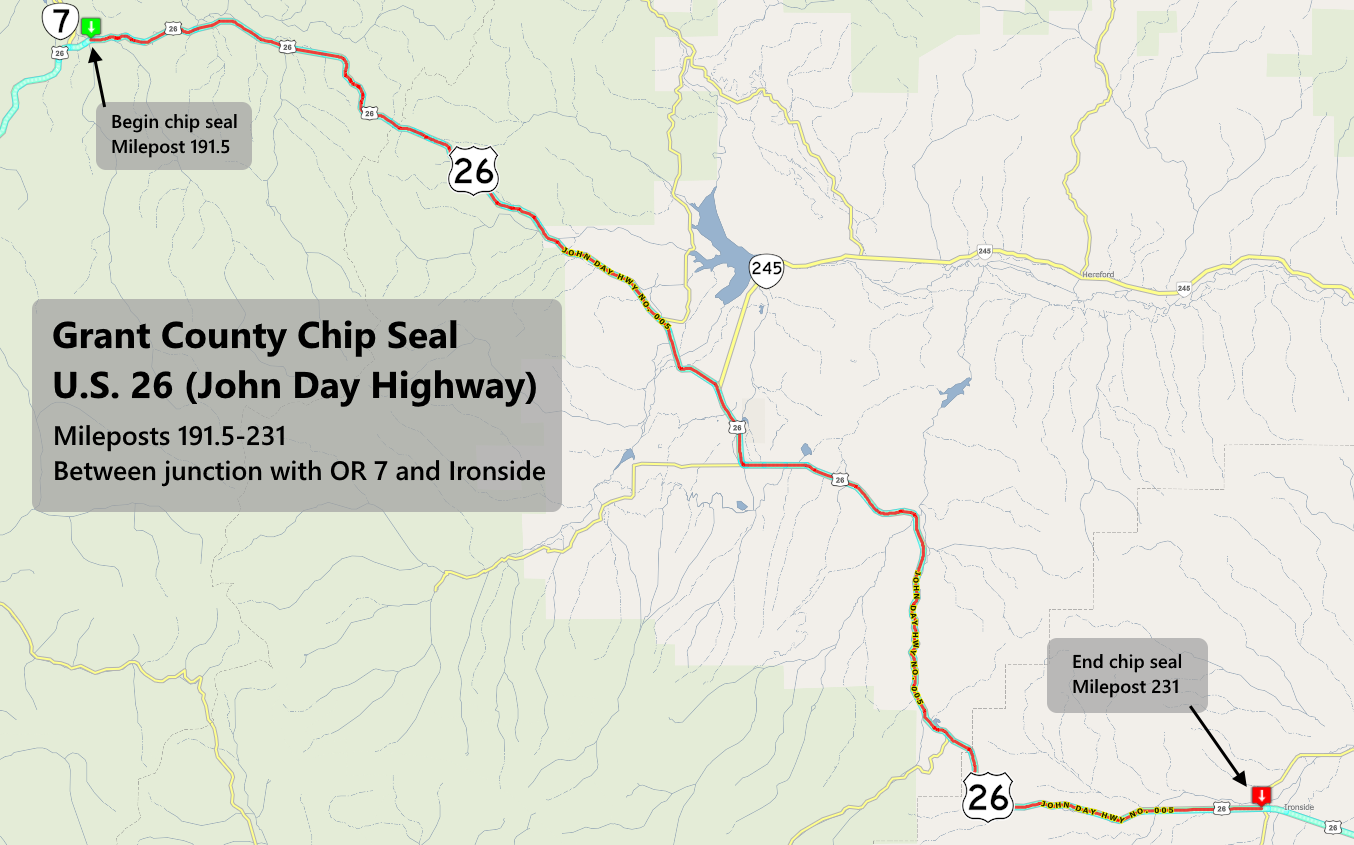What now for burned forests?
Published 3:59 pm Friday, August 21, 2015

- Staff photo by George PlavenCharred snags are left behind from the Parish Cabin Fire that broke out east of Seneca in 2012. It is up to the Malheur National Forest to come up with a management plan for the landscape once firefighters finally extinguish the Canyon Creek Complex that continues to burn south of John Day.
The damage caused by the Canyon Creek Complex wildfire south of John Day isn’t just limited to 39 destroyed houses.
Flames have also torched tens of thousands of acres of trees and vegetation throughout the Canyon Creek watershed, leaving the barren landscape vulnerable to future soil erosion and flooding.
Officials at the Malheur National Forest are already at work developing a rehabilitation plan to protect the environment while also allowing some opportunities for logging burned up trees to boost the local economy.
The plan, known as a Burned Area Energy Rehabilitation treatment, or BAER, outlines site-specific projects to watershed health, such as planting new trees and repairing infrastructure including bridges and culverts.
Forest Supervisor Steve Beverlin said the planning is done in conjunction with Grant County and local property owners. The BAER team has already started discussing what projects will look like along Canyon Creek to minimize the fire’s impact.
“It outlines the actions we’re going to do, and where, and when, and who’s going to do them,” Beverlin said.
The Forest Service expects to have the Canyon Creek BAER finished within 30 days of when the blaze is fully contained. As of Friday evening, the Canyon Creek Complex is 61,631 acres and 13 percent contained.
Once foresters are able to access the fire area, Beverlin said they expect to find little vegetation left on the steep hillsides to soak up spring rain snowmelt. Without that natural cover, water flows down into the creek as if it’s coming off concrete, washing dirt and ash into the stream and creating flooding concerns around homes.
Water quality is an important issue, since the creek is prime habitat for bull trout and steelhead, Beverlin said.
“We’ll have to do a lot of upland soil stabilization work,” he said. “It’s our job to slow down and intercept the precipitation we get so it doesn’t all come running down at once.”
In addition, Beverlin said there should be some opportunities to salvage burned logs. Exactly how much will depend on the fire’s final footprint.
The forest does not allow salvage logging in the wilderness areas or within 300 feet of streams. The BAER team must also discuss with the local mill in John Day, Malheur Lumber, about their capacity for new logs, Beverlin said.
“We are exploring opportunities for salvage, and there appears to be some,” he said. “We’re just trying to determine the appropriate places, and the appropriate amount.”
Some species of animals are able to carve out habitat from burned up tree snags, Beverlin added. In particular, the Malheur National Forest has one of the most diverse groups of woodpecker species anywhere in the country, which feed on insects found in the decomposing wood.
Beverlin said the forest would like to get started with rehabilitation before the first major snow of winter, and so far they are ahead of the game. Grant County has already identified Doug Ferguson as a liaison for the group, and conversations are underway with the Blue Mountain Forest Partners collaborative group.
“We’re being proactive,” Beverlin said. “We really need to get on rehabilitation in a timely manner.”
———
Contact George Plaven at gplaven@eastoregonian.com or 541-966-0825.






